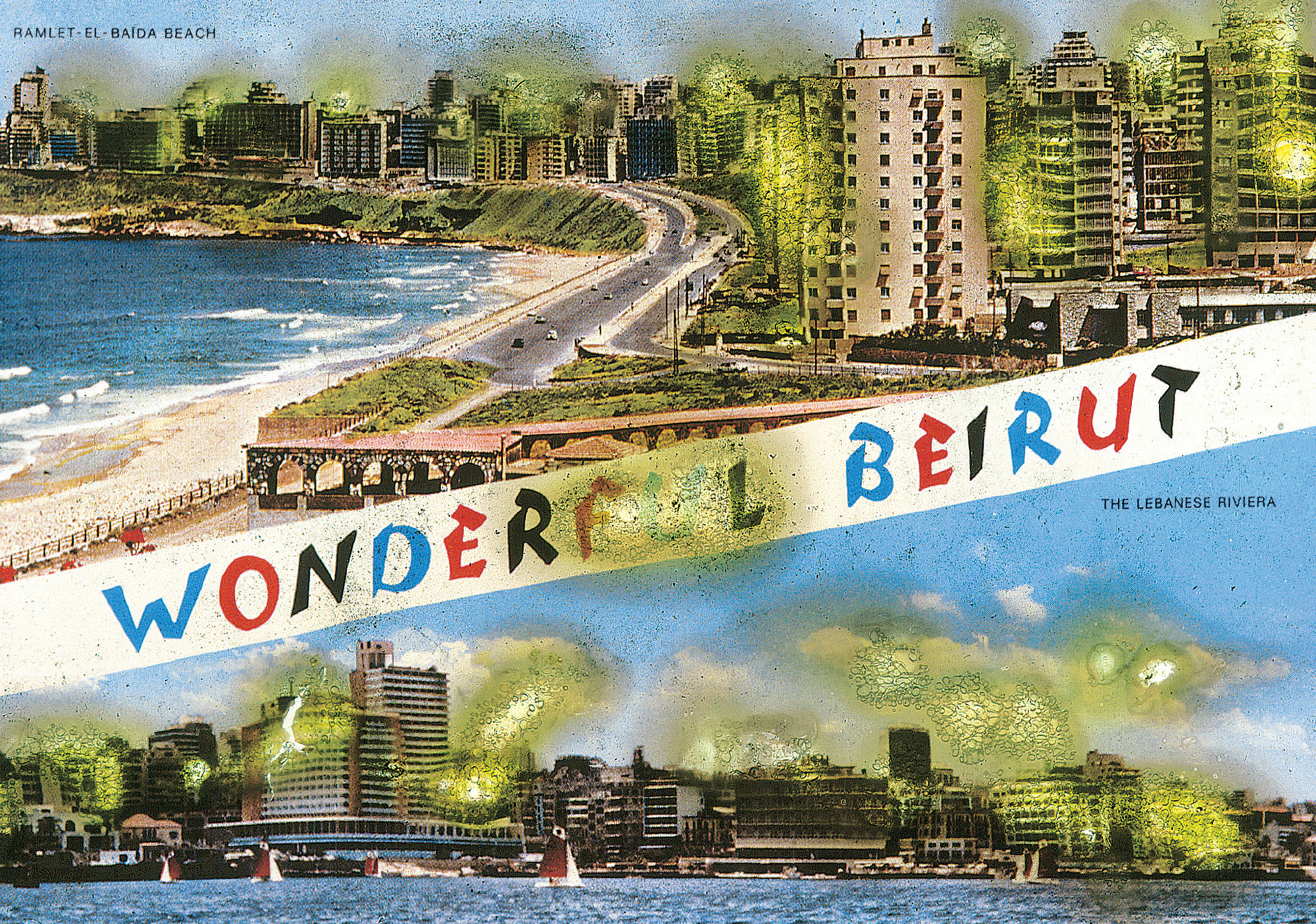Artist Project / The Story of a Pyromaniac Photographer
Abdallah Farah and Beirut’s “Battle of the Hotels”
Joana Hadjithomas & Khalil Joreige

The Story of a Pyromaniac Photographer is the first part of Wonder Beirut, an ongoing project begun in 1998 and based on the work of Lebanese photographer Abdallah Farah. In 1968 and 1969, Farah published a series of postcards of Beirut showing the city’s most outstanding and modern tourist spots: the cinemas, the souks, hotels and beaches, local monuments, and main thoroughfares such as Banks’ Street. These postcards are still on sale in Beirut bookshops, even though most of the monuments and sites they represent have been destroyed.
Shortly after the official beginning of the Lebanese civil war in the spring of 1975, the Wahed Studio, where Farah worked, came under attack and was destroyed in a fire. He managed to salvage some photography equipment and a few of his positives, including the ones for the postcards. Two months later, Farah started damaging the positives of his postcards himself, burning them little by little in imitation of the destruction of the buildings he saw gradually disappearing in all the bombing and street fighting.
At first he worked in a very organized way, following the trajectory of the shelling and defacing the images to parallel the events of the day. He always dated the shell 37 impacts, tried to find their origin, and noted it all in a little book. Farah re-photographed the positive after each new burn he inflicted on it, producing a series of evolving images; this we call the “historical process.” Later, however, he went further and began inflicting additional damage on the buildings in the postcards, either accidentally or deliberately. This is what we call the “plastic process.”
The images presented here represent only part of The Story of a Pyromaniac Photographer—a selection of photos Farah burned during what is known as the “Battle of the Hotels,” a conflict which began a few months after the Lebanese civil war broke out officially on April 13, 1975 and continued into 1976. On one side were the Christian rightist militiamen known as Kataeb; on the other, a pro-Palestinian leftist and pan-Arab coalition. They fought to control various areas of Beirut, including sector IV, which was home to the main luxury hotels of the city and constituted one of the most important tourist areas in the Middle East. Opposite the hotels were the Kantari residential area, the outskirts of the city center, and the 32-story Murr Tower, a strategic point dominating the seashore—all within one square kilometer.
Farah’s damaged images often look like new photographs. They have now been published at our initiative, but with his agreement. By publishing and distributing these images, we are trying not only to publicize his work but also counter the trend in Lebanon of idealizing the past and projecting a future fantasy by bracketing off the civil war and including it only marginally in our contemporary history.


Joana Hadjithomas and Khalil Joreige are filmmakers, artists, and university teachers based in Beirut and Paris. They have collaborated on numerous photographic installations, videos, short films, and documentaries, as well as a feature film, Al Bayt el Zaher [Around the Pink House], which was released in 1999. They are currently working on a multifaceted project called Wonder Beirut, which includes “The Novel of a Pyromaniac Photographer,” “Postcards of War,” and “Latent Images.” Their publications including Beyrouth: Fictions urbaines.
Spotted an error? Email us at corrections at cabinetmagazine dot org.
If you’ve enjoyed the free articles that we offer on our site, please consider subscribing to our nonprofit magazine. You get twelve online issues and unlimited access to all our archives.